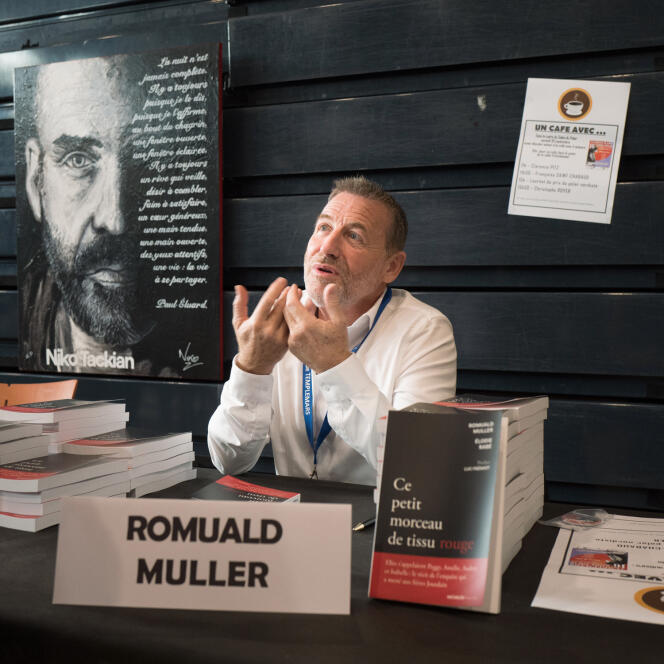The line gets longer but he doesn’t care. On September 30, the Salon du thriller de Templemars (North) has just opened and, already, people are rushing to have the book by commissioner Romuald Muller signed. Having arrived from Baghdad, where he has been stationed at the directorate of international security cooperation for a year, he is somewhat at home here. Sixteen years of judicial police (PJ) in Lille, that leaves a mark, and not just the police officer, as the criminal cases he carried out have left indelible memories in Hauts-de-France.
If he started out in anti-terrorism and found himself appointed, at the age of 26, director of investigation into the attack against UTA’s DC 10 above the Ténéré desert, in Niger, in 1989, this “investigative addict” will truly deploy to the Lille judicial police, his second position. He continues major criminal cases: the hunt for the “Roubaix gang”, these radicalized young people who left to wage jihad in Bosnia-Herzegovina and returned as bloody robbers; the investigation into Sid Ahmed Rezala, nicknamed “the train killer”, the Festina affair (“we still stopped the Tour de France…”, he said), the arrest of Rédoine Faïd, that of Dino Scala, the serial rapist of the Sambre…
It is said that everyone who has worked in the criminal squad keeps within them a case, solved or not, which haunts them. For Romuald Muller, 60 years old, it is that of the Jourdain brothers. His book (This little piece of red fabric, co-written with Elodie Rabé, published by Michalon, 198 pages, €18) traces the investigation carried out to confuse these two scrap dealers who kidnapped, raped and murdered four young women one carnival night.
Amélie, Peggy, Audrey and Isabelle
It was the winter of 1997. Their names were Amélie, Peggy, Audrey and Isabelle. The young women, twice sisters, had disguised themselves as Pierrot, a marquise, a musketeer and an Indian woman. It is in these costumes that, nine days later, Lille PJ investigators will find their bodies, buried on a beach on the northern coast, near a blockhouse. A scene “glaucous”, under a fine, cold rain, the sordid details of which he keeps to himself. Rather, he tells “how do we deal with a disappearance”, “the emotional elevator” of these days hoping to find the four missing people safe and sound, doubting, and finally understanding that, given the profile of the two suspects, there is no longer any chance of finding them alive.
In this show which attracts detective novel enthusiasts, Romuald Muller warns: “This book is anything but a thriller. » Way to remind you that this is unfortunately not fiction. Every year since 1997, the Dunkirk carnival-goers pause to remember Peggy, Amélie, Audrey and Isabelle. Commissioner Muller also wanted to pay tribute to the mothers of the victims. The magistrate Luc Frémiot, who was general counsel during the two Jourdains trials, ended up agreeing to write the afterword of the book, after hesitating for fear of “to delve back into this terrible affair”.
You have 41.57% of this article left to read. The rest is reserved for subscribers.
